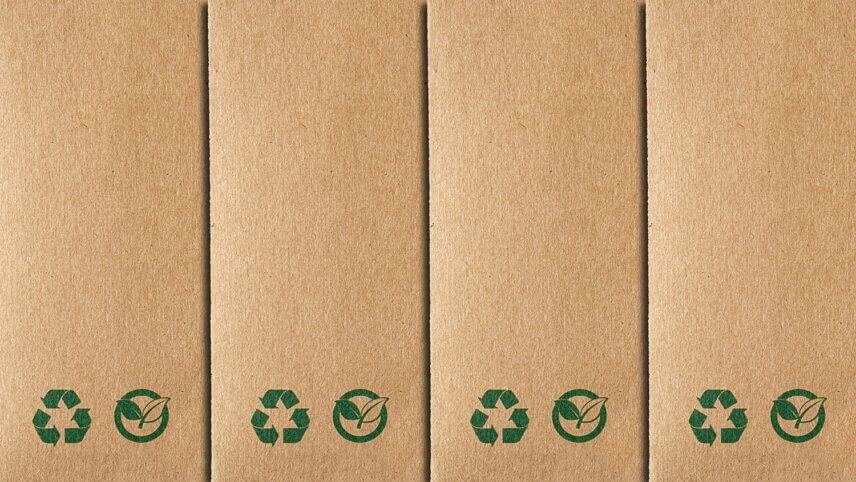
From using responsibly sourced materials to maximizing supply-chain efficiency, earth-conscious consumers expect producers and packagers to adopt sustainable practices, bringing goods to market. Among the expanding initiatives for going green, committing to compostable packaging alternatives can make a difference for the planet.
Compostables, Bioplastics, and Biodegradable Packaging Solutions
Various materials support earth-friendly packaging efforts, but key differences distinguish biodegradable packing materials from compostables and other types of green packaging, showing distinctions within the circular packaging space, and clarifying some of the misconceptions consumers hold. Plant-based packaging, for instance, isn’t always compostable or biodegradable. And just because a certain packaging material is compostable doesn’t assure it is also biodegradable.
Three types of packaging material variations are commonly utilized for green applications. Bioplastics, comprised of natural materials, serve as stand-ins for their oil-based counterparts. In some cases, such as bio-PET, natural substances are fermented to make environmentally friendly substitutes for traditional plastics. Various packaging bioplastics are made from starches and cellulose derived from natural ingredients like corn, potatoes, soybeans, and wood.
Another environmentally conscious packaging approach utilizes biodegradable material, which breaks down over time, reducing the long-term environmental impact of packaging and containers. By definition, biodegradable packages convert into the soil without assistance, ultimately integrating as a natural material. A landfill biodegradable designation requires that the material must be able to complete the cycle without the aid of oxygen. A different set of parameters applies to packaging considered marine biodegradable, which must fully degrade in water within six months.

A third popular green packaging alternative, compostable material breaks down with the help of bacteria, insects, fungi, and additional organisms, resulting in a nutrient-rich fertilizer that can improve soil quality. Compostables diverge from biodegradable material because they will not degrade without oxygen or in water. As a result of the environment they require in order to degrade, biodegradable materials will not form compost.
Two designations distinguish various forms of compostable material; the substances are either considered home compostable or industrial compostable.
Compostable packaging can be composted by consumers alongside food scraps and other organic material traditionally held in home compost bins. In order to meet the established standard for home compostable packaging, the component material must physically break down within six months and chemically break down within twelve months.
Industrial compostables require a more rigid set of conditions to effectively break down, including higher temperatures and calibrated nitrogen, oxygen, and carbon levels. Under the prescribed conditions, certified industrial compostable material forms compost in 180 days or less.
Maximizing the Benefits of Compostable Packaging
Understanding distinctions between various alternative packaging solutions has implications for the waste cycle — each material class requires different treatment to achieve the maximum desired environmental benefit. Therefore, compostable packaging lends itself to specific applications.
When less barrier protection is called for, and products have a relatively short shelf life, compostables may offer a viable alternative to traditional packaging. Without waste management mechanisms in place to receive compostables, however, their effectiveness is limited to home compostable options in some regions.
For example, some of the compostable bags now available replace traditional plastics and can be managed at home with standard composting efforts. In cases when reusable designs are inappropriate or instances in which obstacles impede traditional recycling, compostable packaging alternatives may present a more eco-friendly alternative.
Packaging that becomes soiled with food waste, thus ending up in landfills, also offers an opportunity for better outcomes with compostable packaging.
Compostable packaging is made from natural elements, sometimes blended with naturally derived polymers. Examples of materials used in compostable packaging solutions include wood, fungi, potato starch, palm leaves, and other fully compostable substances. Wheat, corn, and other additions are also present in many types of compostables, resulting in not only fully compostable food cartons and boxes but also paper versions of bubble wrap and other familiar packaging staples.
Paper packaging products are compostable when they contain only paper, but those with oil-based plastic additives or coatings may not fully compost. In order to ensure you’re doing your part for the planet, ecocycle.org recommends keeping plastic-coated packaging out of your compost bin. The organization promotes straightforward strategies for limiting inadvertent plastic pollution that can occur, despite consumers’ commitment to sustainability and responsible packaging practices.
- Look for the BPI label certifying material as compostable – In order to earn the designation from BPI, compostables undergo testing and evaluation that confirm the material will break down in commercial composting facilities.
- Reuse durable products – Utilizing multi-use containers and other durable goods is an effective starting point for reducing waste. Compostables offer earth-friendly solutions when durable, reusable packaging is impractical or unavailable, but only when the material is free of plastics.
- Embrace PLA – An early green solution replacing petroleum-based plastics, poly-lactic acid (PLA) bioplastics are compostable. Material labeled #7 PLA is made of natural substances that produce compost.
- Pay attention to paper – Recycling cardboard, mail, magazines, and newspaper is still the best way to dispose of material that can be made into new paper. On the other hand, paper towels, napkins, and paper scraps can be effectively composted. When processing paper waste, it is important to distinguish between certified compostable cartons, containers, paper plates, and carryout packages, and others containing plastic and coatings that prevent them from creating compost.
Packaging innovation continues to yield eco-friendly alternatives, replacing traditional packaging materials. Though the expanding green packaging space can be confusing for consumers, compostables offer clear advantages for many packing applications.
Not only do earth-conscious compostable packaging approaches reduce waste and lower greenhouse gas emissions, but compostable packaging also converts to a nutrient-rich soil additive. As consumer awareness continues growing, producers and their packaging partners offer increasingly diverse compostable packaging solutions.
At Assemblies Unlimited, our innovation and resourcefulness can meet your packaging project needs. Whether you require a compostable packaging solution or other unique contract packaging requirements, please request a quote, and a specialist will reach out to discuss your project.
